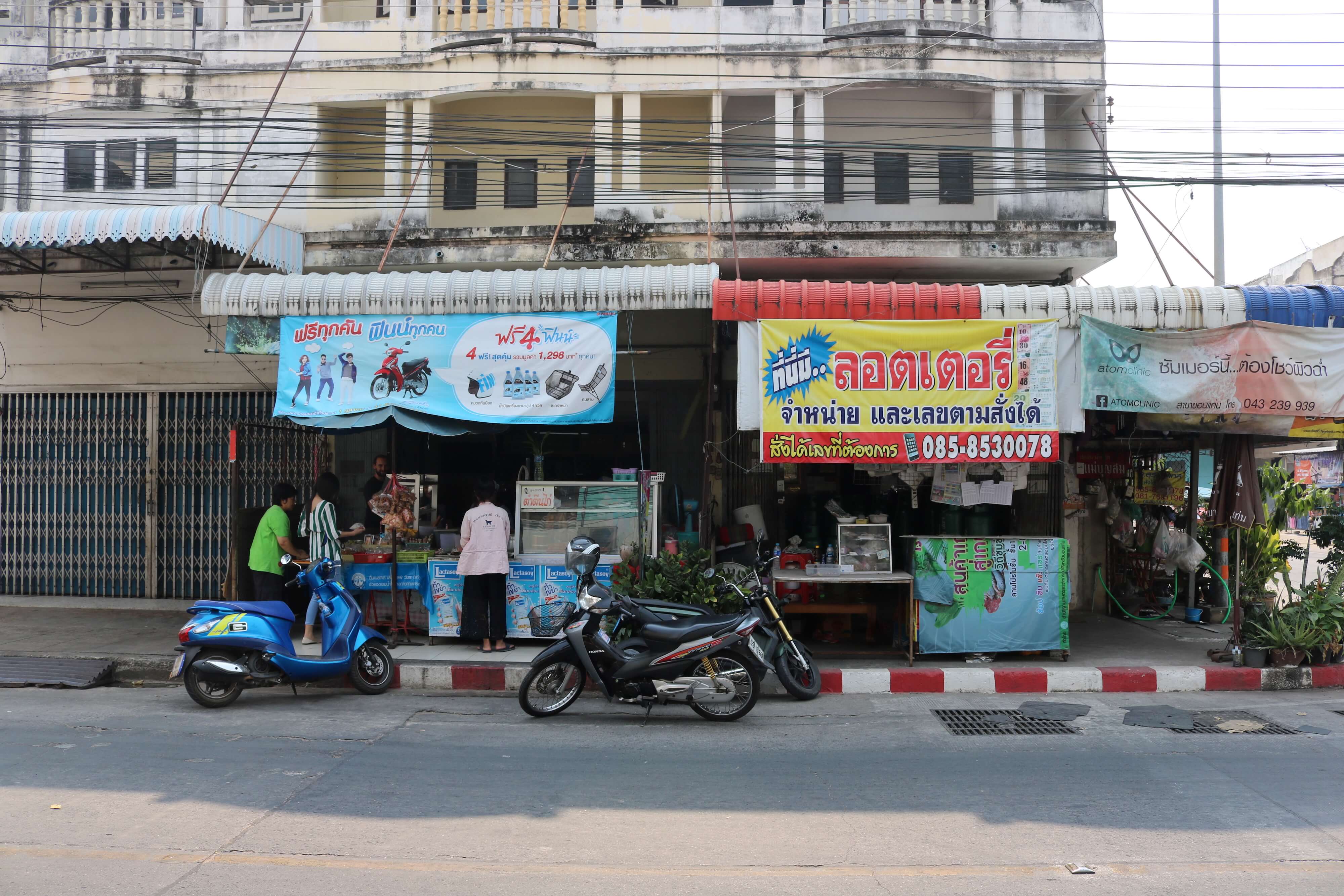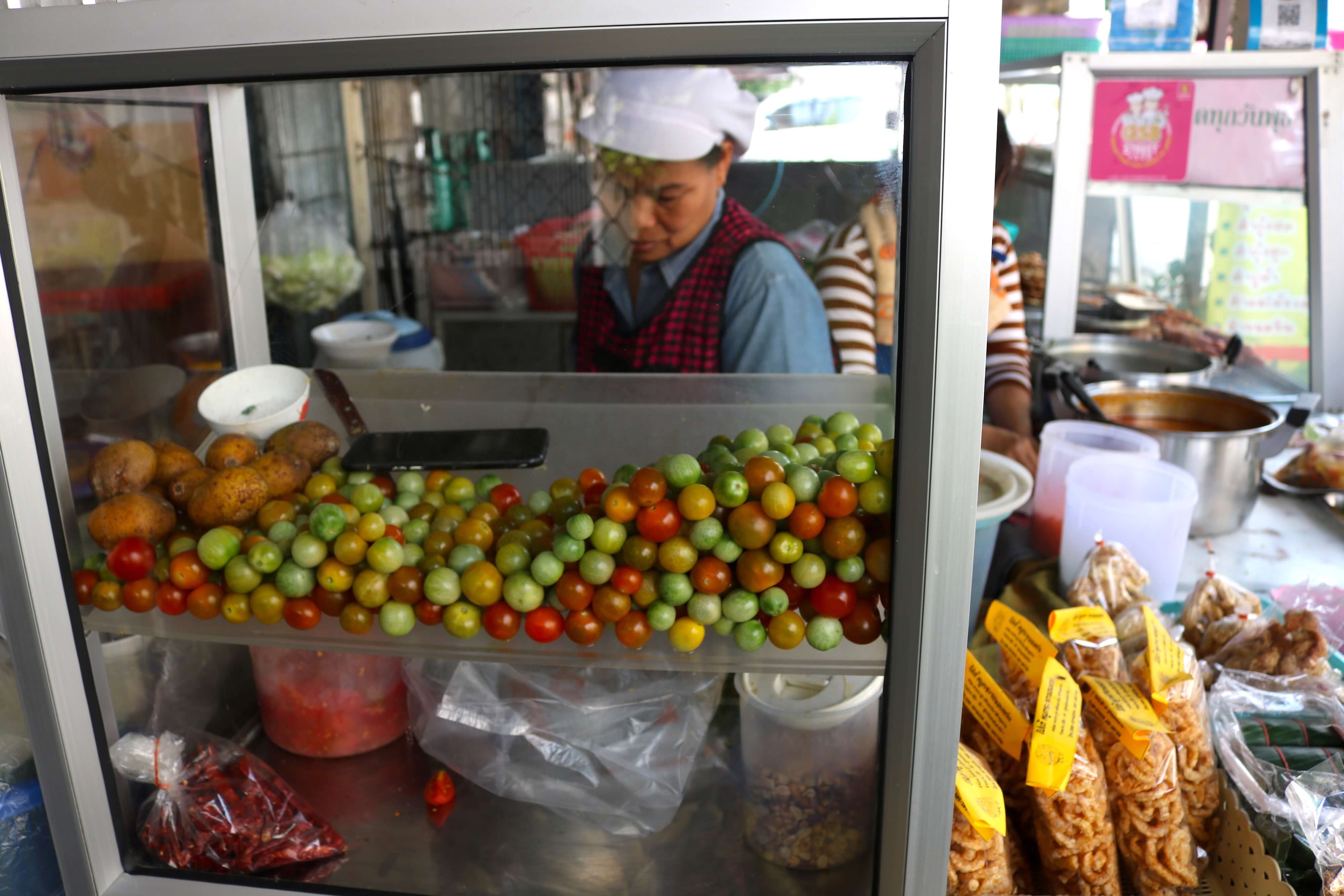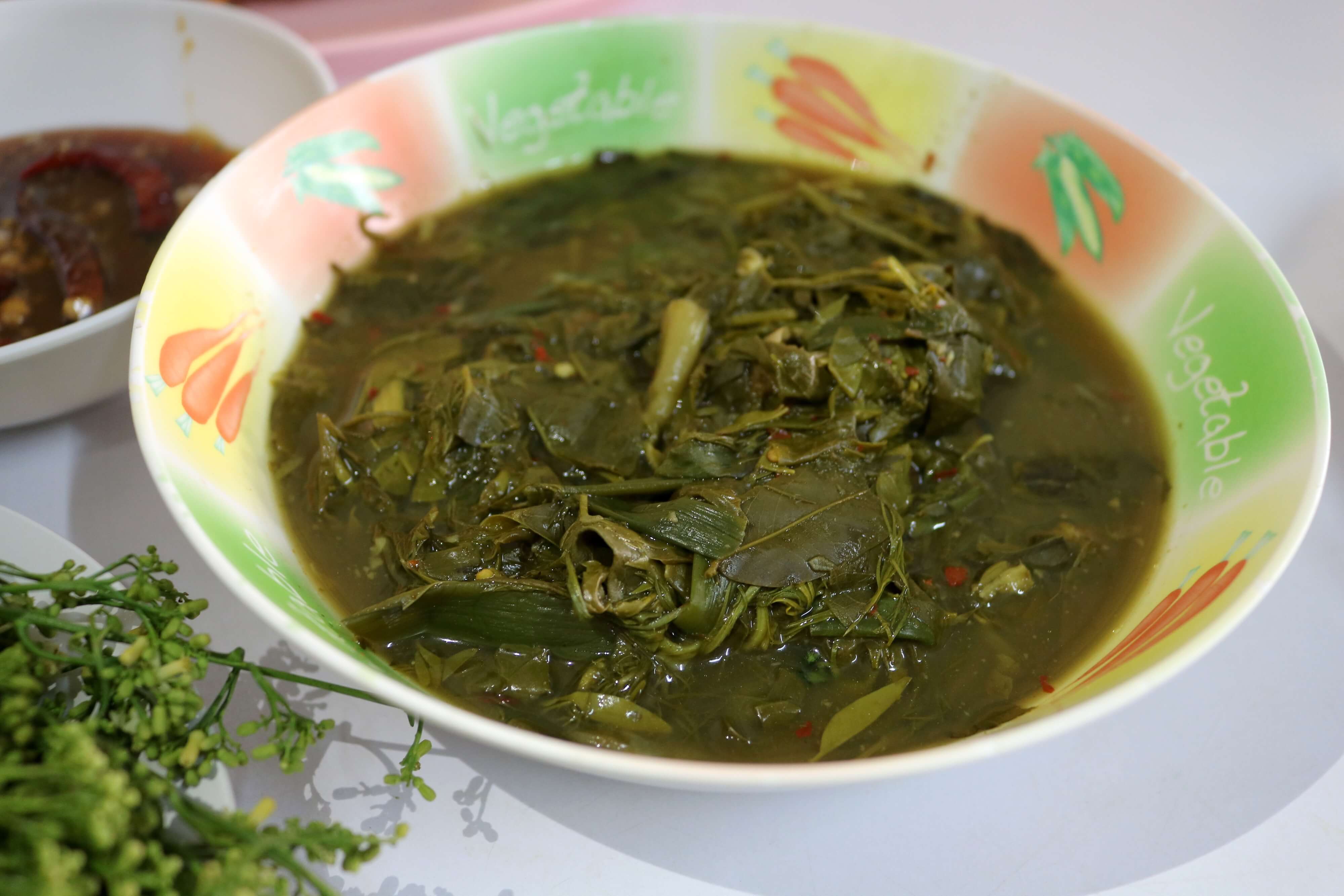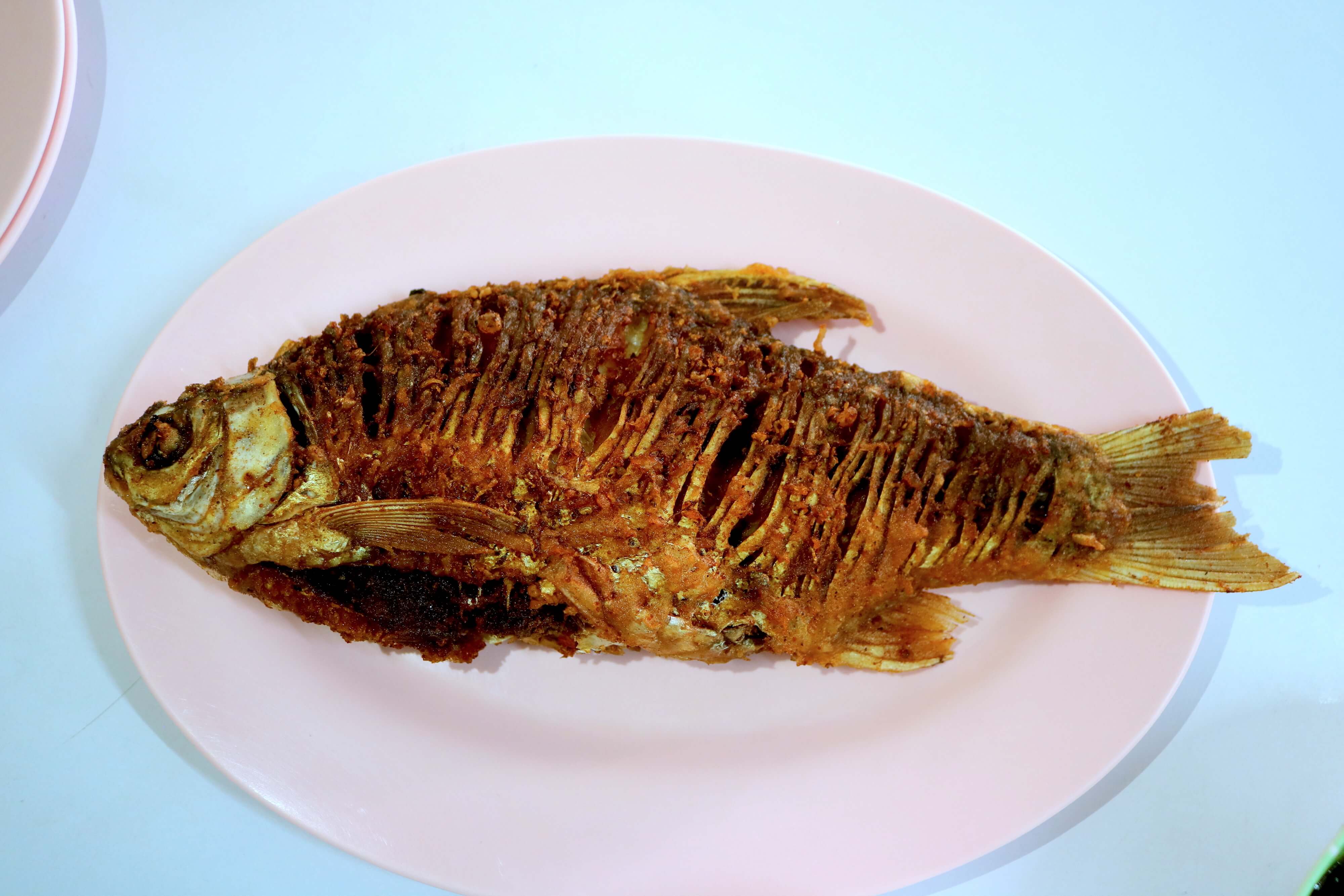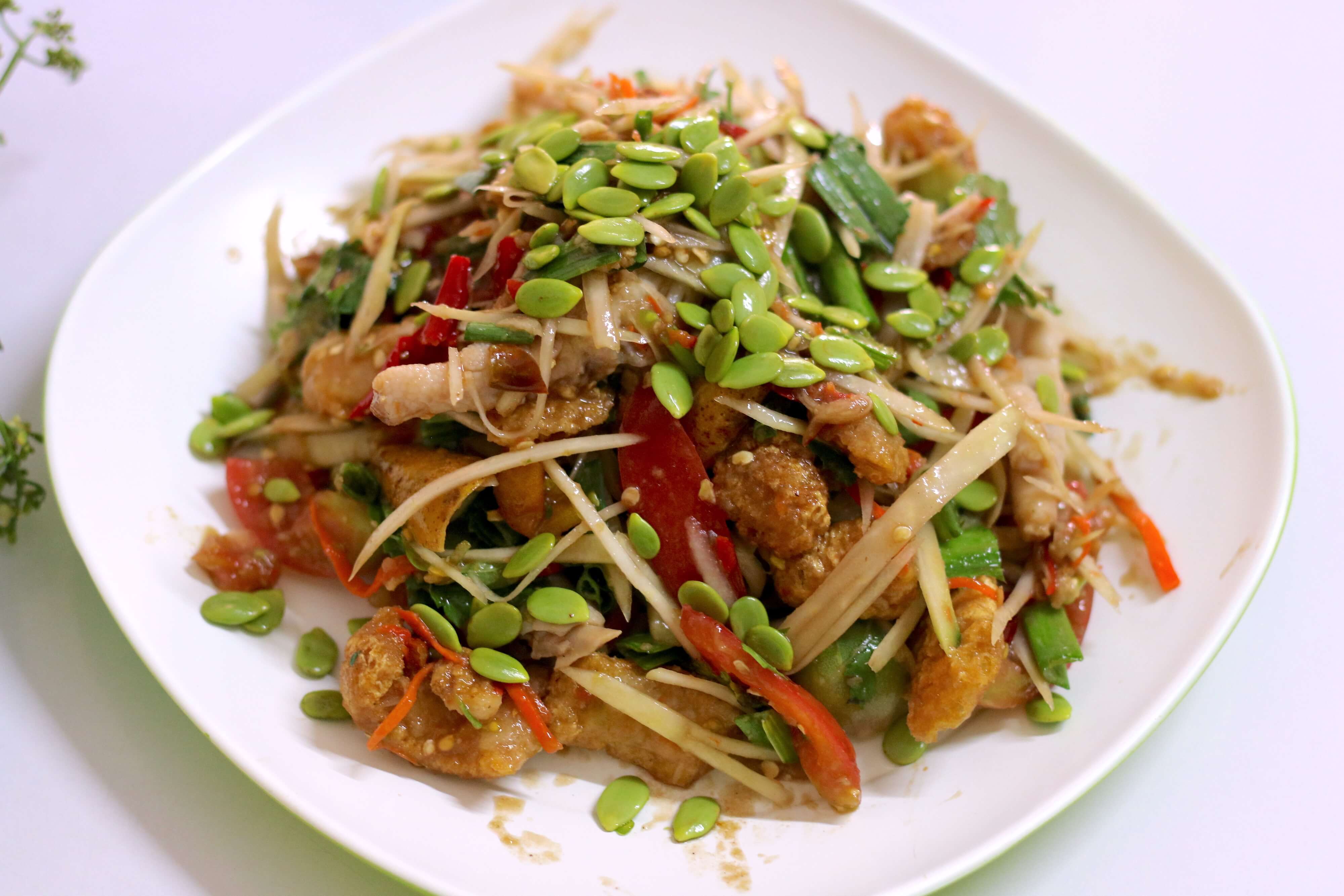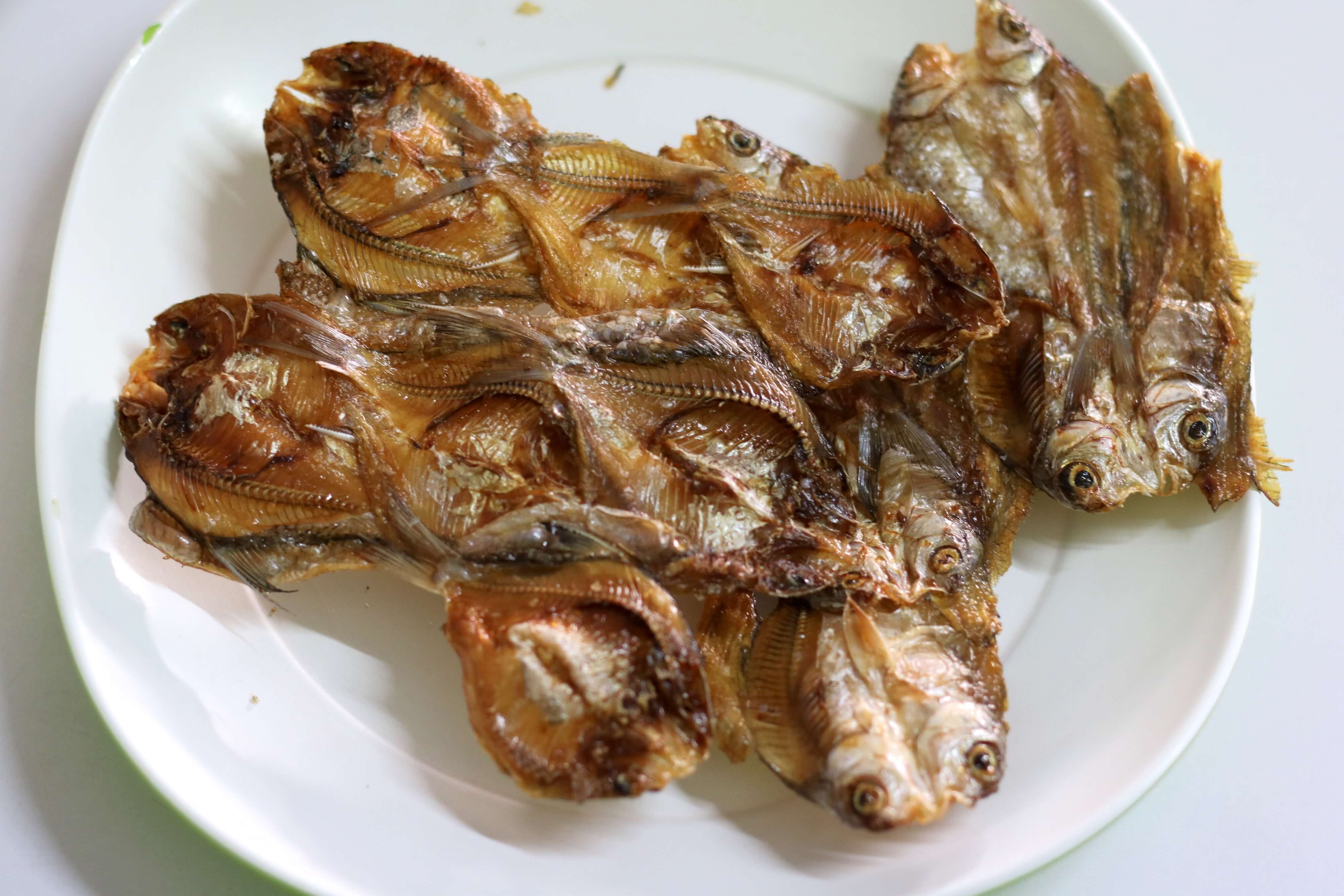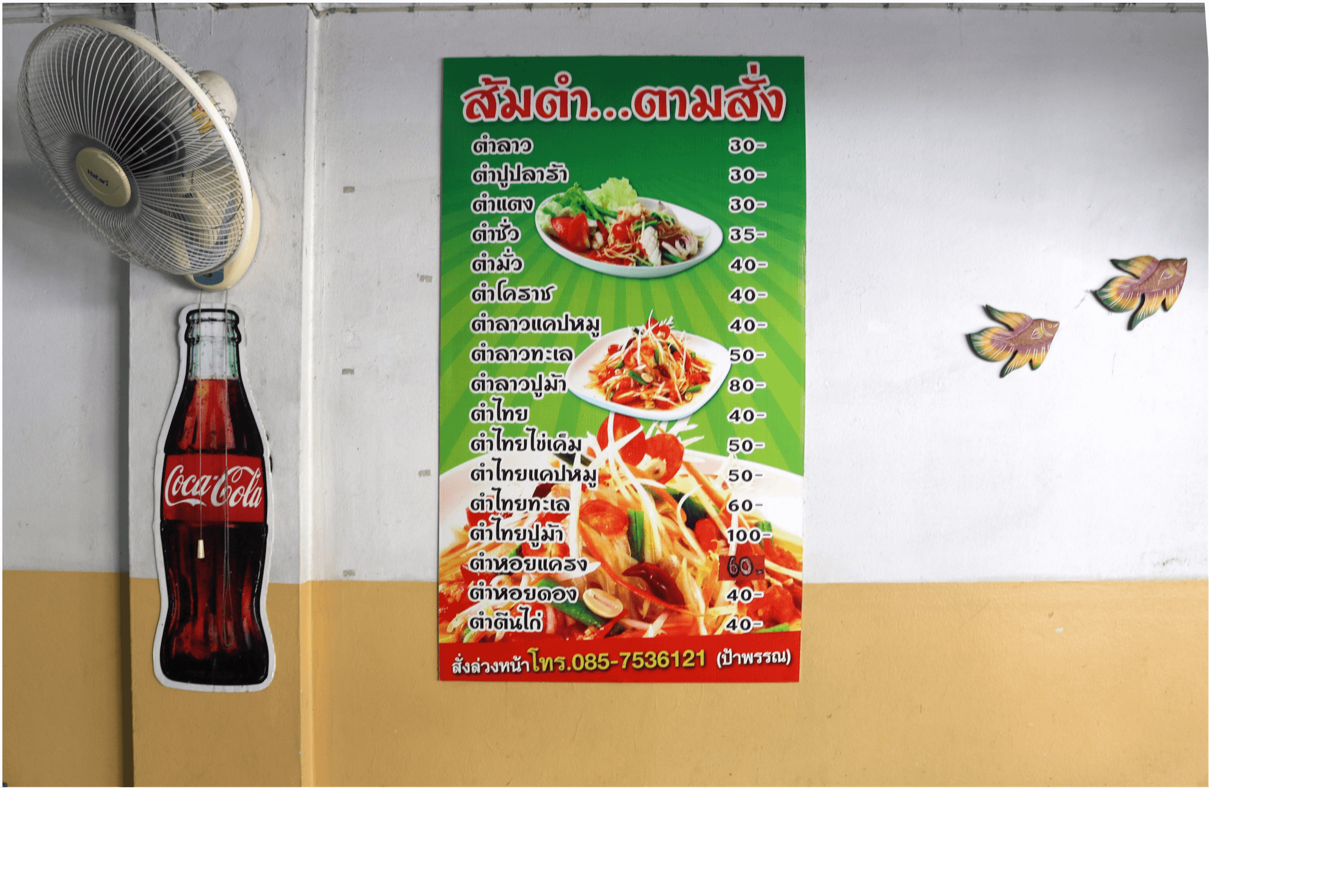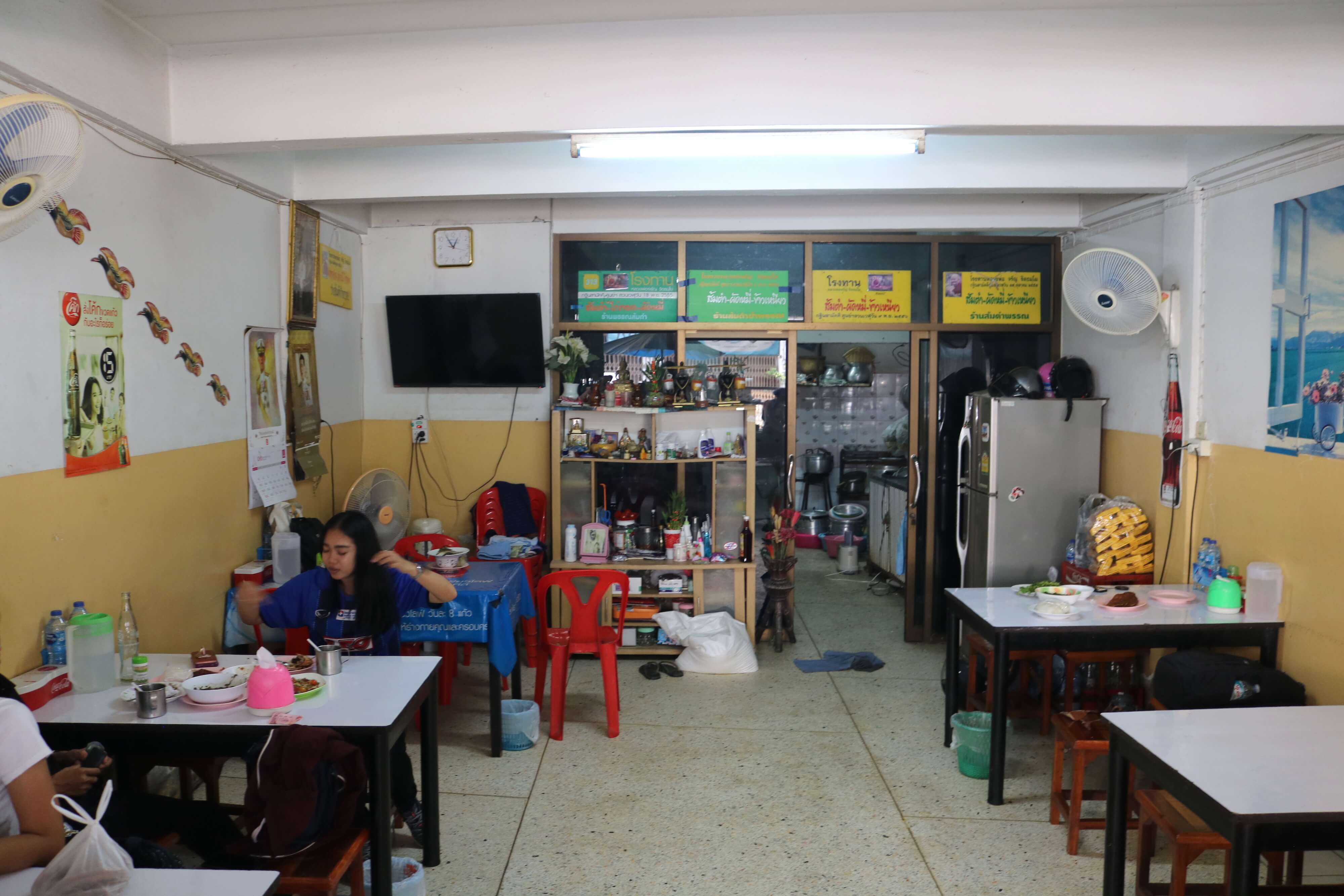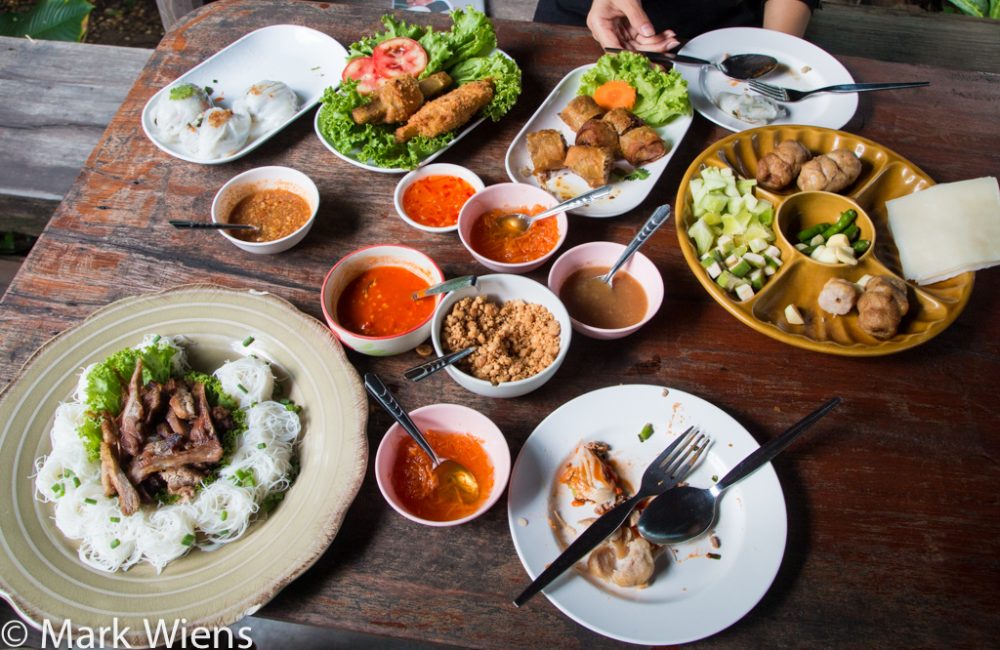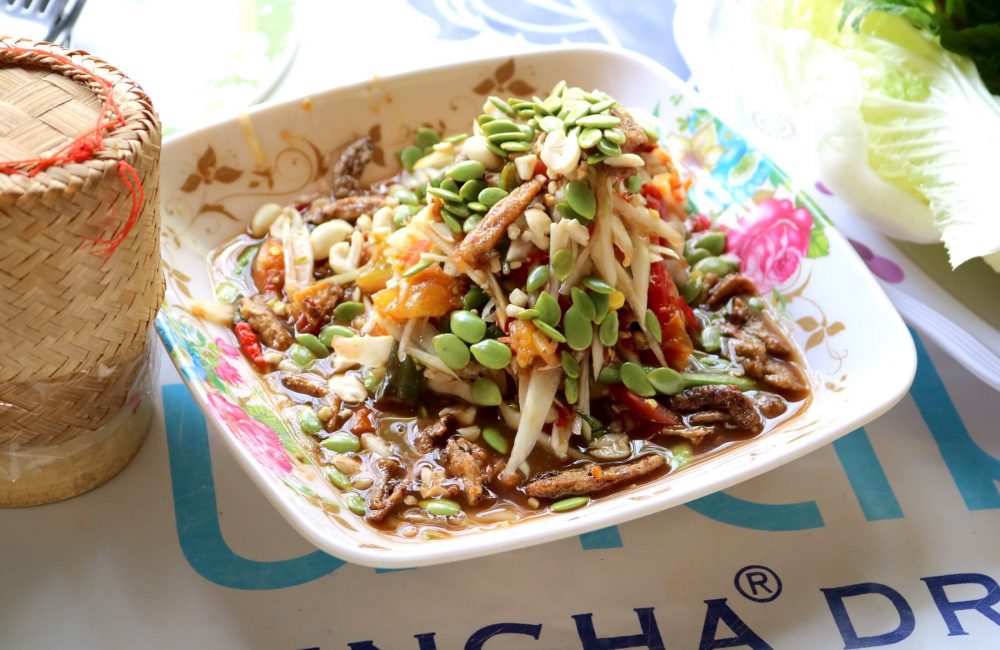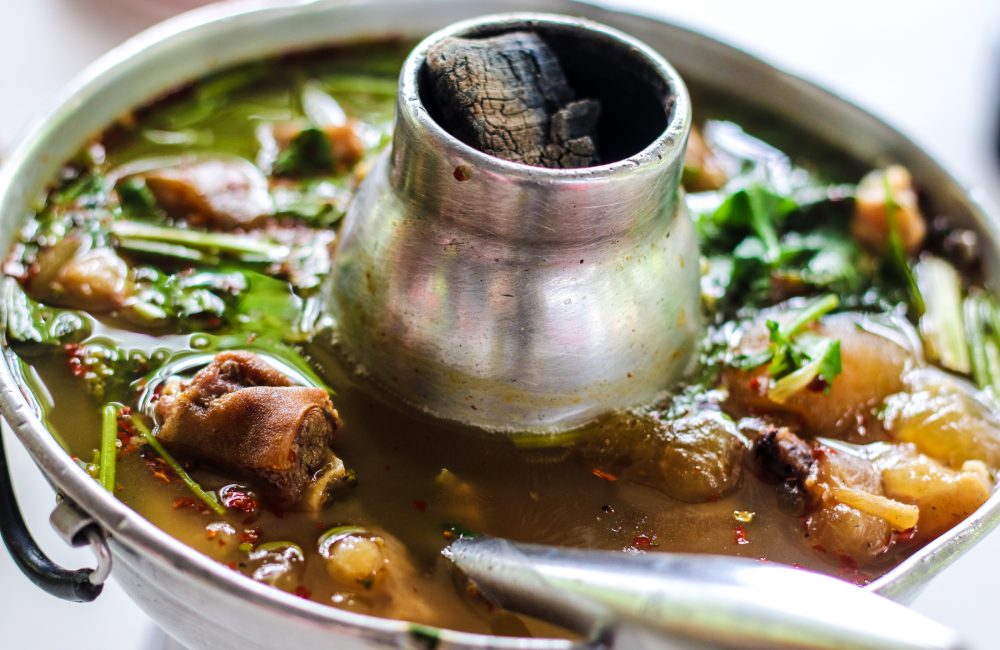Chicken Feet in Laos-Style Papaya Salad (ตำตีนไก่) at Som Tam Pann
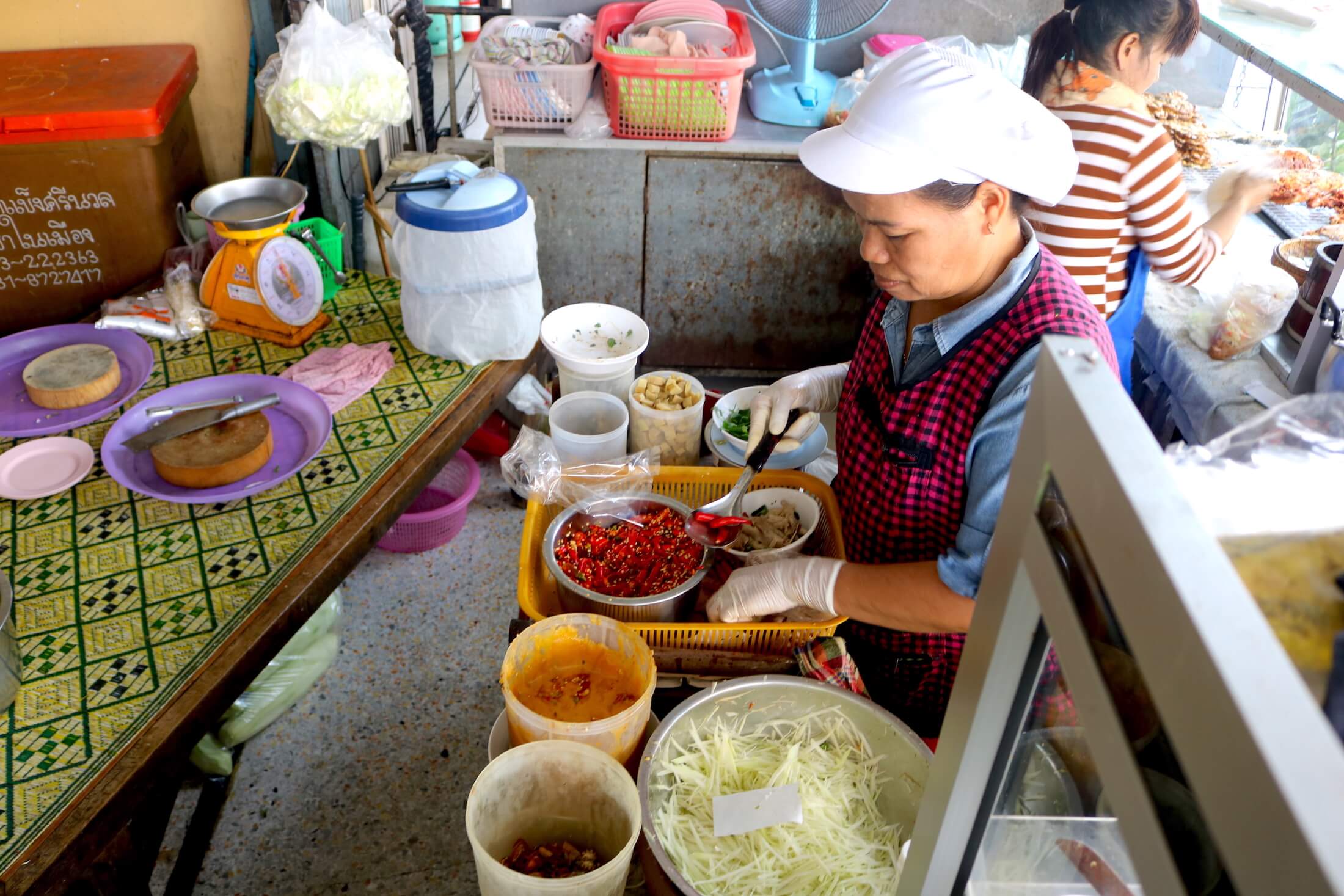
Papaya Salad ส้มตำ (“som tam”) is easily the most well-known food in all of North-Eastern Thailand.
You’ll find incredible variety and often very unique local flavors by trying all the versions you can find of this one, freshly made food!
‘Tam’ is available throughout the country of Thailand (and all over the country of Laos as well!), but exactly what extra ingredients the people prefer in each province is what makes each recipe so special.
In this article, I want to show you an amazing and unique variation, one that I’ve never seen before, at Ba Pann restaurant, a home restaurant in the large town of Khon Kaen.
Let’s go!
Always Local, Always Fresh
In my opinion, Pounded Thai Salads are easily worth a vote as a World’s Greatest Food. So adaptable, most of the ingredients are fresh, can be found quite cheaply as all items grow here naturally (always local, sometimes even home-grown).
Its simply astounding how much variety there is in the ‘tam’ recipes around Thailand, and in the end, even if you don’t know the names of a single thing, its still just delicious local Thai food.
One of the best places to have ‘tam‘ in Khon Kaen, Thailand, is at the home of Ba Pann (คุณป้าพรรณ). She likes to make her som tam with a very unique ingredient – the boiled feet of a chicken!
Ba Pann is Head Chef (and Owner)
Walking up to the restaurant, you know you are at the right place when you see the pots, trays, and drying pans, all full of Esaan’s local delicacies.
Look to your right, and in the glass case you will see fried chicken, fried fish, and a pile of white chicken feet. In the large containers, the different sauces to go with sour rice noodles (ขนมจีน), or “khanom jeen,” and finally, if you’re lucky that its not already sold out, a massive pot of Cassia Leaf Curry (แกงขี้เหล็ก), or “gaeng khi lek.”
Ba Pann also makes her own special cakes of tiny, dry river fish, and I will get to that in a bit, move a little further to see some intensely bitter (yet very healthy) bundles of tough shoots from the Neem tree.
Now its time to figure out what you want to order. Among many of the well-loved local Esaan foods I would love to recommend for you here, you can start to narrow it down by thinking which things will go best with your personal preference of Ba Pann’s Papaya Salads.
Cassia Leaf Curry (แกงขี้เหล็ก)
One dish that always excites me to see, is the murky, herbaceous, aromatic curry made with Cassia leaves.
The Siamese Cassia tree is native to Southeast Asia, and the leaves of it are in one of the most healthy foods in all of Thai cuisine. แกงขี้เหล็ก or “gaeng khi lek,” is commonly eaten in Central Thailand, but the version in the North East (Esaan region) is quite different.
Esaan chefs usually do not include coconut milk, but do add thick chunks of pork cracklings. They also prefer just to soak the cassia leaves (instead of Central Thais who often pickle the leaves first) which gives the countryside version a much more earthy, gently bitter flavor.
Earthy Flavors in the Extreme
Few dishes have such a solid, pleasant, just all around home-cooking flavor to them. Eat this with sticky rice, and enjoy it (as Esaan people do) for breakfast, lunch, or dinner.
Full of lemon basil (ใบแมงลัก), lemongrass (ตะไคร้), galangal (ข่า), finger root (กระชาย), kaffir lime leaves (ใบมะกรูด), and of course the cassia leaves themselves (ใบขี้เหล็ก), don’t forget a few fiery chilies (พริกสด) (she’s tossing them in whole!).
Sour Fish (Silver Barb) (ปลาส้ม)
Fermenting fish meat (just for a day or two, this is not ‘pla-raa‘), and then bathing the entire fish in oil, she deep fries each one to a light crispy golden color, and serves them well with sticky rice.
From my very first visit to this North Eastern area of Thailand until now, I am in love with the way they treat their sausage, their use of meat in salads, and of course, the ultimately delicious ways in which they like to ferment fish.
The amount of umami in each bite of fermented-ness cannot be underestimated. If you have never had the chance, I urge you, order every option possible to include ‘Pla-Raa’ (the water from pots of Esaan fermented fish and field crabs) or a “som” style–meat, like the Silver Barb in the photo above.
The Esaan Genius of Fermenting Fish Meat
This fish is an example of the absolutely magical flavor options that can come out of the countryside rice fields, places held so dear by the people of Esaan, producing so much more than just rice (the crabs they pickle to put in Laos-style ‘Tam’ also come from the fields as well!)
You’ll use the fish to dip up, smear, or mix together small portions with a finger-ful of sticky rice, and get just a hint of the very strong flavors of this fish meat. Fermentation makes for some truly heavy flavors though, but none of these are dishes that are eaten in huge mouthfuls.
After catching fish with nets, using poles in rivers, or just picking them out of traps in the sluice gates on the sides of every rice field, Esaan people literally make fermented fish a staple of their diet.
Speaking of Fermentation, its time for the main course…
Papaya Salad with Chicken Feet (ตำตีนไก่)
There are many more things in a papaya salad than just the long strips of green papaya, but of course it is important to note that Ba Pann always hand-chops her papayas (not using a grater).
Look through all the options among the small plastic containers that Ba Pann has at her ‘Tam’ station, you could easily come up with a hundred different varieties just from her single chef station.
Popinac Seeds
You may notice these shiny green seeds, which are Popinac seeds (กระถิน or ‘Gra-tin, read about this in Thai here). These come from a small-ish tree in the Mimosa family, and although gra-tin is originally from Mexico, I think its obvious that today, SouthEast Asia must love them just as much as the Americas do.*
Note* – One of the most common toppings to countryside-style ‘tam,’ both the seeds and the entire seed pods sometimes as well!
Local, Sour Tomatoes
There are also two species of tomatoes, shreds of carrot, Thai olive (มะกอก), and of course, a healthy ladling treatment of fermenting fish sauce (นำ้ปลาร้า).
Make sure to try a tomato on its own as well, they are so wonderfully sour! This is another ingredient I have to have in every plate of ‘tam.’
You can’t go wrong to ever order another round of Som Tam either, and honestly I’ve been at a point in my life before where I wondered if I had an actual addiction to the salty and umami-ful flavor profile of this fish sauce!
Pork Crackling, Esaan-style
Finally, another wonderfully crunchy ingredient she uses in her special version of som tam is Esaan pork crackling (กากหมู), pig skin which she deep fries.
Remember, this is a different style of pork cracklings from those more common in Central Thailand.
Esaan style pork cracklings use several top layers of fat and skin from the pig, making it quite thick and insanely crunchy, whereas Central Thailand only uses the very topmost layer of skin, making the cracklings much more airy (and extremely crispy and light).
The Chicken Feet
This is the food from which the restaurant takes its name. Its a special dish, but not nearly as gruesome as it sounds.
The chicken feet boil to the point where they’re quite soft, and just before they’re falling apart. The nails have been removed, and there are only the bones inside each toe section that still remain.
These make it easier to pick up though, and once you get the hang of it, its no more difficult than using your teeth to peel the meat off a plate of steamed pork ribs, or digging out the last few strips of dark meat from a chicken wing.
The local preference is to either have chicken feet either in a soup, or as a snack, mixed up with vinegar and chilis in small to-go bags (very much like the Southern Chinese do as well). I love the ingenuity shown here at Ba Pann’s Restaurant too, and this is surely one of the best foods she is serving.
Crispy Dried River Fish (ปลาขาวทอด)
The fish dry out in the sun for a day, after which the chefs rub them in salt and MSG, and then presses a dozen or so at a time together using a woven wicker mesh.
This pressing is what allows the fish to stick together, and as they continue to dry, they basically form into one absolutely massive single fish cracker!
At this family run shop, the team of people working together is so large, that they not only cook all their own food, but they even carry over some of their products for sale at a nearby market as well.
And these fish are a number one seller!
If you don’t see the fish, just Ask!
If you don’t see these fish, then just ask for a plate yourself. They might just be selling so fast, there’s no time to restock that front cabinet.
This is such a cool and unique food, another little something you just have to try when you visit.
To eat them, just use your hands to break off a piece (which may be an entire fish itself), and use it as an edible spoon, dipping up som tam, cassia leaf curry, or dipping it in a spicy chili sauce.
The Restaurant Experience
For local people of Khon Kaen, this restaurant is famous locally for fried chicken, fried noodles (ผักหมี่ or “pad mee,” another Esaan local favorite food), and for the dry fish (above).
A lot of people came just to order an entire chicken for takeaway, but you have to notice that many people also order a huge to-go bag of chicken feet som tam as well.
It might seem like a weird recipe, but I can tell you from experience, it is these ingenious ways of using all-local ingredients that can just make you fall head-over-heels in love with a local food culture – just like Esaan food has done over these years to me.
One of Thailand’s All-Time Favorites
From Surin in the Southern part of Esaan all the way up to Nongkhai and Nakon Panom in the North, sometimes its even hard to find a single restaurant that doesn’t serve at least one version of Som Tam.
Even in the Thai capital of Bangkok, hundreds of kilometers from the Isan (North-East) region, there are endless amounts of small, homely shops, all the way to local institution-level establishments, all selling their own version of Thailand’s favorite fresh, pounded salads.
The contributors to Eating Thai Food happen to enjoy making papaya salad at home as well, and here is an easy recipe you can use to make Papaya Salad (street food style) at home as well. You can also watch the video here!
If you happen to have a wooden mortar and pestle of your own, then please tell me what special ingredients you find most delicious, whenever you’re ready to pound up the next batch of spicy, papaya salad.
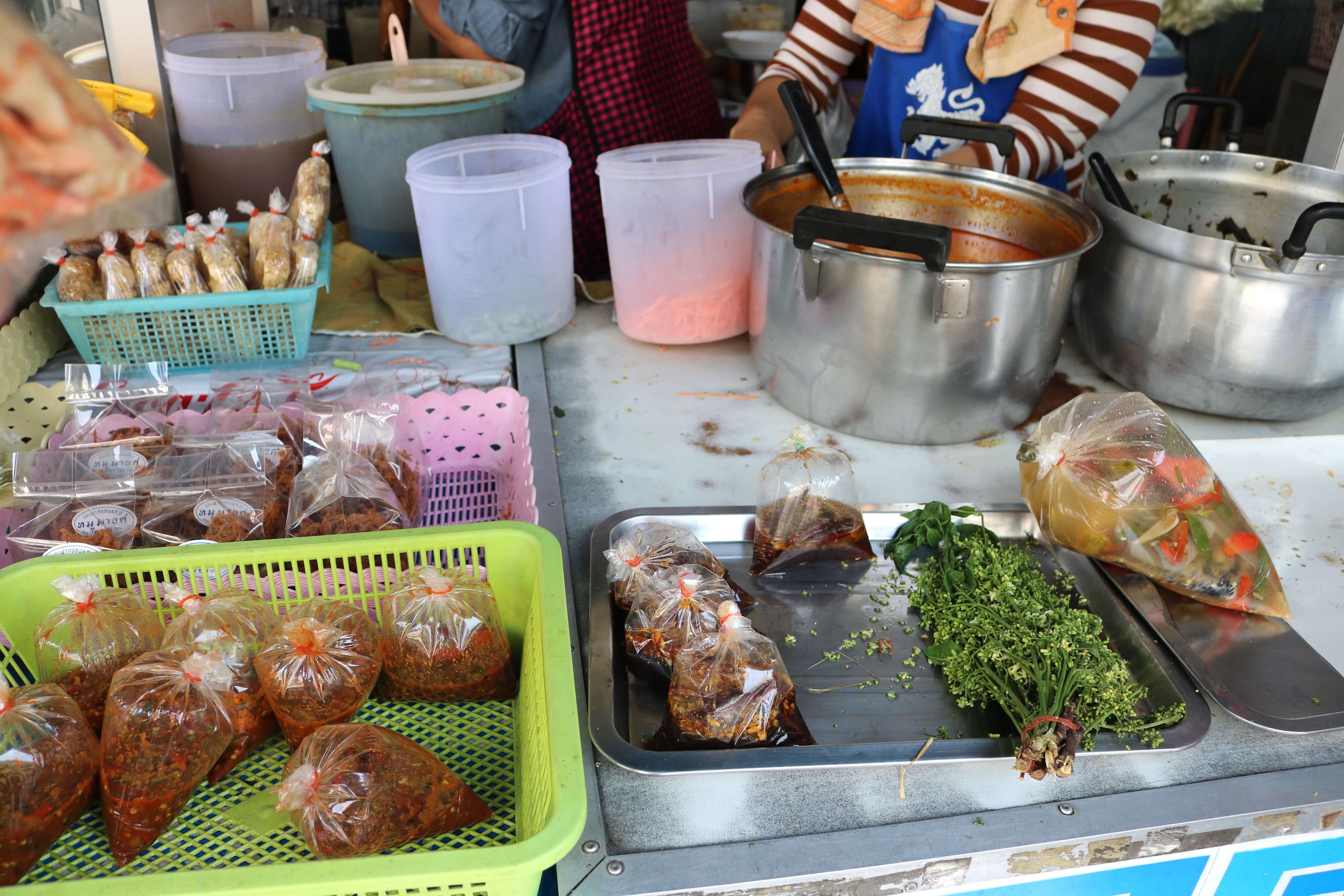
Try Neem Leaves, a bitter herb eaten with this strongly sweet, spicy, very salty fish sauce.
Note* – The shop is directly next to a local lottery ticket store (see the big red awning), and Som Tam Pann restaurant itself is in a classic Chinese-style shophouse.
Name: Som Tam Pann Restaurant (ร้านส้มตำพรรณ)
Location: (Google Maps)
Hours: Open Daily, 8am-3pm
Price: This entire meal (for 2 people) came to 210 baht.

